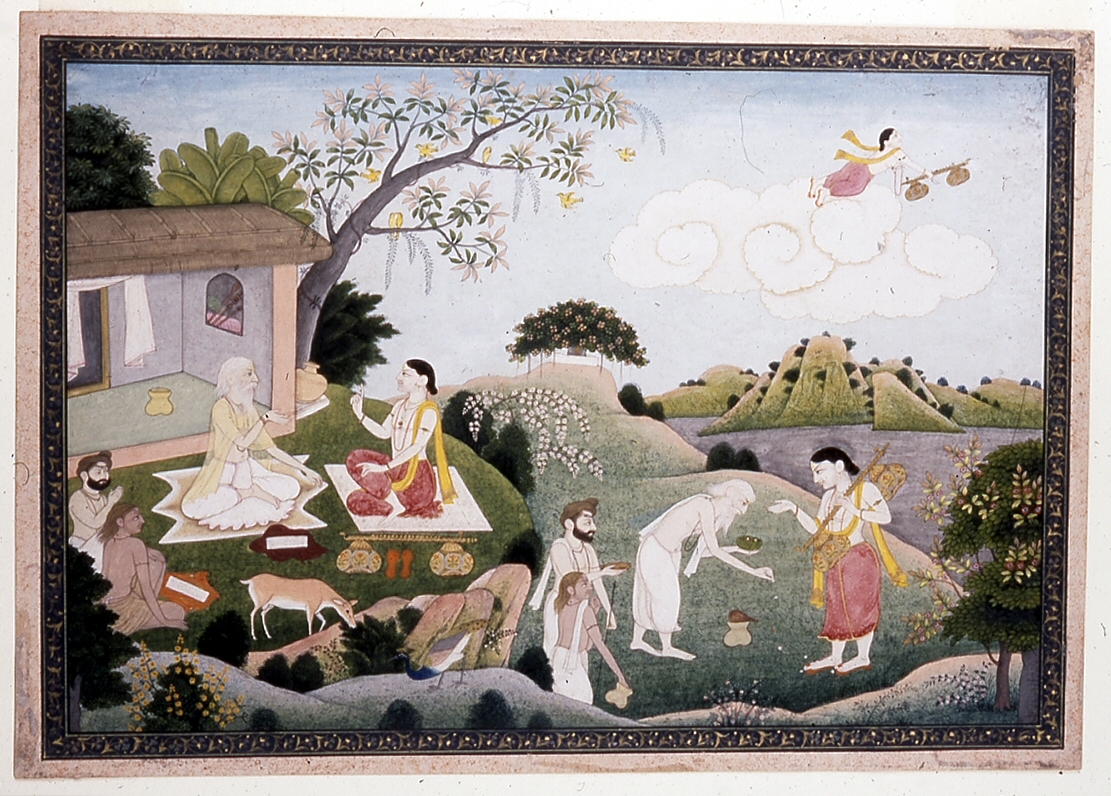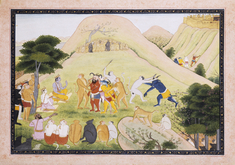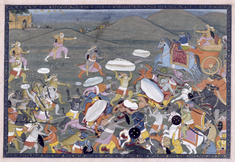Narada Visits Valmiki
(India, Nepal, and Tibet)
This painting, made for a manuscript of the Ramayana epic, illustrates three moments of an episode in which the divine messenger Narada visits the elderly sage Valmiki, traditionally identified as the author of the Ramayana and the first poet of the Sanskrit language. During the visit, Narada summarized the story of Rama for Valmiki, who had sought to learn about a man who was perfect in every way. On the left, the two converse in front of a hut at Valmiki’s hermitage ("ashrama"), accompanied by two yogi sages and a deer. In front of Valmiki and one of the yogis, two long, rectangular manuscripts have been unwrapped from their protective cloths. Narada has removed his shoes, which sit beneath his vina, the stringed instrument he is said to have invented. To the right, Valmiki bids Narada farewell, and above, Narada flies away.
Provenance
Provenance (from the French provenir, 'to come from/forth') is the chronology of the ownership, custody, or location of a historical object. Learn more about provenance at the Walters.
John and Berthe Ford, Baltimore [date and mode of acquisition unknown]; Walters Art Museum, 2002, by gift.
Geographies
India, Himachal Pradesh, Kangra (Place of Origin)
Measurements
9 1/4 x 13 3/8 in. (23.5 x 34 cm)
Credit Line
Gift of John and Berthe Ford, 2002
Location in Museum
Not on view
Accession Number
In libraries, galleries, museums, and archives, an accession number is a unique identifier assigned to each object in the collection.
In libraries, galleries, museums, and archives, an accession number is a unique identifier assigned to each object in the collection.
W.909




